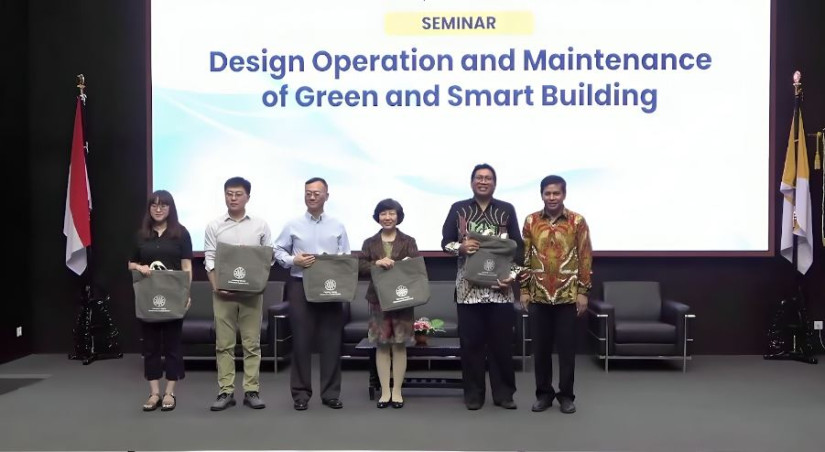
Green and smart buildings are designed to reduce negative environmental impacts and enhance energy efficiency and occupant comfort.
Therefore, collaboration among architects, engineers, contractors, and operators in maintaining and measuring sustainable performance using a comprehensive diagnostic framework is essential.
This was discussed in the “Seminar on Design Operation and Maintenance of Green and Smart Building” on Friday (Apr. 19) at the Auditorium of the Smart Green and Learning Center (SGLC), UGM Faculty of Engineering (FT UGM).
Some of the speakers present were Professor John Zhai from the University of Colorado, United States, Prof. Lin Duanmu from the School of Infrastructure Engineering, Dalian University of Technology, China, Professor Khee Poh Lam from the College of Design and Engineering, National University of Singapore, and Dr. I Wayan Mustika, Faculty of Engineering, Universitas Gadjah Mada.
Dean of FT UGM Professor Selo stated that this environmentally friendly and smart building concept creates sustainable and comfortable living spaces; thus, strategic thinking from experts worldwide regarding design, operation, and maintenance is essential.
He mentioned that FT UGM continues to prioritize collaboration, proactive maintenance, and the role of occupants in improving building performance.
“This seminar will provide valuable insights from real experiences in events discussing topics through the practice of green and smart building,” he said.
Dr. I Wayan Mustika from FT UGM presented about UGM’s development and implementation in building a green and smart campus (SGLC), focusing on energy and water monitoring systems.
SGLC has an integrated energy, water, and air monitoring system, as well as a presence detection and weather station.
“It also has security systems and structural health monitoring to support efficient and sustainable operations,” he said.
Professor Khee Poh Lam discussed the importance of collaboration among architects, building engineers, contractors, and operators, preventive maintenance and sustainable performance measurement using a comprehensive diagnostic framework.
Meanwhile, Yu Xue presented a method for determining air pollutant sources by reversing the identification process from measuring pollutant concentrations at multiple locations to the source location.
Professor Lin Duanmu and Dr. Xin Jia from Dalian University of Technology introduced a project involving the use of sea wave energy sources for heating or cooling systems within buildings.
Author: Dita
Editor: Gusti Grehenson


